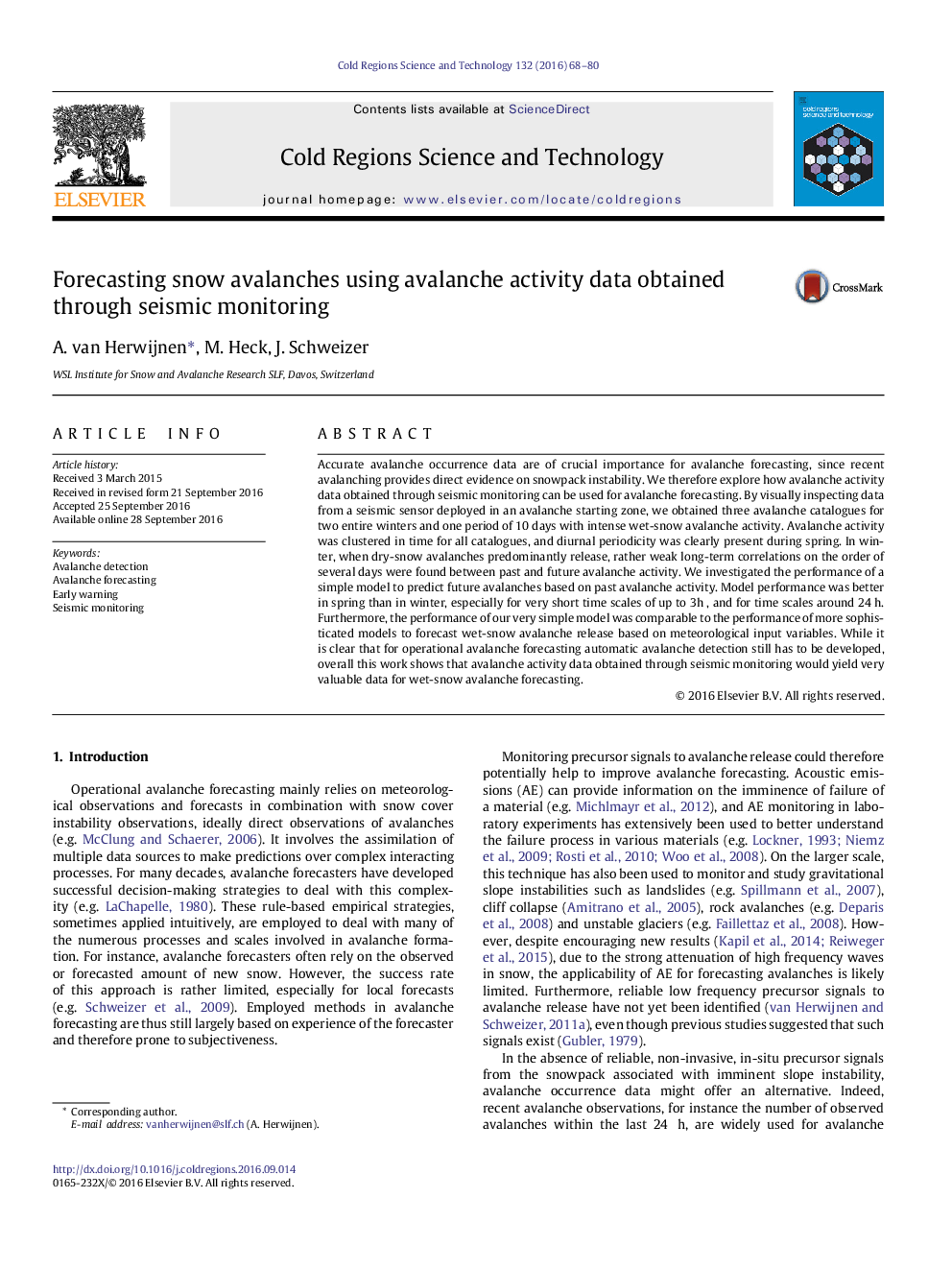| Article ID | Journal | Published Year | Pages | File Type |
|---|---|---|---|---|
| 4675605 | Cold Regions Science and Technology | 2016 | 13 Pages |
•We obtained three snow avalanche catalogues through seismic monitoring.•Clustering and periodicity in avalanche activity were different in winter and spring.•A simple model to predict avalanches based on past activity was proposed.•Model performance was better in spring than in winter in particular for hourly time scale.
Accurate avalanche occurrence data are of crucial importance for avalanche forecasting, since recent avalanching provides direct evidence on snowpack instability. We therefore explore how avalanche activity data obtained through seismic monitoring can be used for avalanche forecasting. By visually inspecting data from a seismic sensor deployed in an avalanche starting zone, we obtained three avalanche catalogues for two entire winters and one period of 10 days with intense wet-snow avalanche activity. Avalanche activity was clustered in time for all catalogues, and diurnal periodicity was clearly present during spring. In winter, when dry-snow avalanches predominantly release, rather weak long-term correlations on the order of several days were found between past and future avalanche activity. We investigated the performance of a simple model to predict future avalanches based on past avalanche activity. Model performance was better in spring than in winter, especially for very short time scales of up to 3h , and for time scales around 24 h. Furthermore, the performance of our very simple model was comparable to the performance of more sophisticated models to forecast wet-snow avalanche release based on meteorological input variables. While it is clear that for operational avalanche forecasting automatic avalanche detection still has to be developed, overall this work shows that avalanche activity data obtained through seismic monitoring would yield very valuable data for wet-snow avalanche forecasting.
